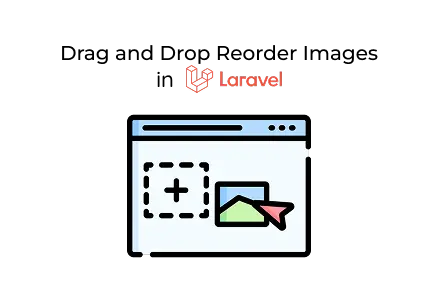Home - Scripts - Website Development

Drag-and-drop image reordering in Laravel improves user experience, saves time, and offers dynamic control for web, mobile, and e-commerce applications.
Key Points
A smooth and interactive user interface can significantly enhance how people use web applications. One of the most popular features in content management systems, admin dashboards, and e-commerce platforms is the ability to reorder items through drag-and-drop. Specifically, image reordering plays a key role in galleries, portfolios, product showcases, and sliders. Instead of relying on manual inputs or numeric fields to set the display order, users can simply drag images to new positions, and the application will automatically save the updated sequence.
Laravel, one of the most popular PHP frameworks, offers a robust backend foundation for this feature. When used with a JavaScript library like SortableJS, jQuery UI, or Laravel Livewire, it enables the creation of a smooth drag-and-drop image reordering system that updates instantly without needing a full page refresh.
The first step is to set up a database table where images are stored. Each record should include not only the image path but also a column that specifies its position in the sequence. Without this column, it would be challenging to keep track of how images should be displayed. For businesses that want this functionality implemented quickly and professionally, it is often beneficial to hire Laravel Developers who are experienced in handling database structures and creating dynamic user interfaces.
A typical migration in Laravel for the images table might look like this:
With this structure, images can be retrieved using an orderBy('position') query to ensure they appear in the correct order. When a user reorders them, the position field updates automatically via an AJAX request handled by Laravel.
Once the database is ready, the next step is to display the images on a webpage. The frontend will use an unordered list (<ul>) where each list item represents an image. Along with displaying the image, each element should have an attribute like data-id that uniquely identifies it for updates.
Here is an example of the Blade template:
To make this list draggable, you can use SortableJS, which is lightweight and very effective efficient:
This snippet records the new order after a drag-and-drop event, creates an array of objects with image IDs and their new positions, and sends it to the server.
Laravel now receives this updated data and stores the new positions in the database. The controller method might look like this:
This method iterates through the reordered list and updates each image’s position field. The next time the gallery is loaded, images will display in the new sequence. This approach is widely used. in web development projects where dynamic interfaces are needed.
Integrating drag-and-drop image reordering in Laravel provides many benefits. Some of the main features include:
Developers can also expand this system to incorporate additional features such as:
For businesses focusing on mobile app development, similar functionality can be integrated into Android or iOS apps using Flutter or React Native, connecting the app to a Laravel-powered backend.
Implementing drag-and-drop image reordering in Laravel is an effective way to enhance content management and improve user experience. By setting up a position field in the database, displaying images with sortable attributes, and updating the order via AJAX, developers can build an efficient and scalable solution.
Whether used in a photo gallery, product listing, or CMS, this feature gives users full control over how their content is organized. The combination of Laravel’s backend capabilities and JavaScript’s interactivity makes implementation both straightforward and reliable. Companies can further improve their projects by hiring Laravel Developers who understand both web development and e-commerce app development, making it easier to scale across platforms, including mobile apps.

©2025Digittrix Infotech Private Limited , All rights reserved.